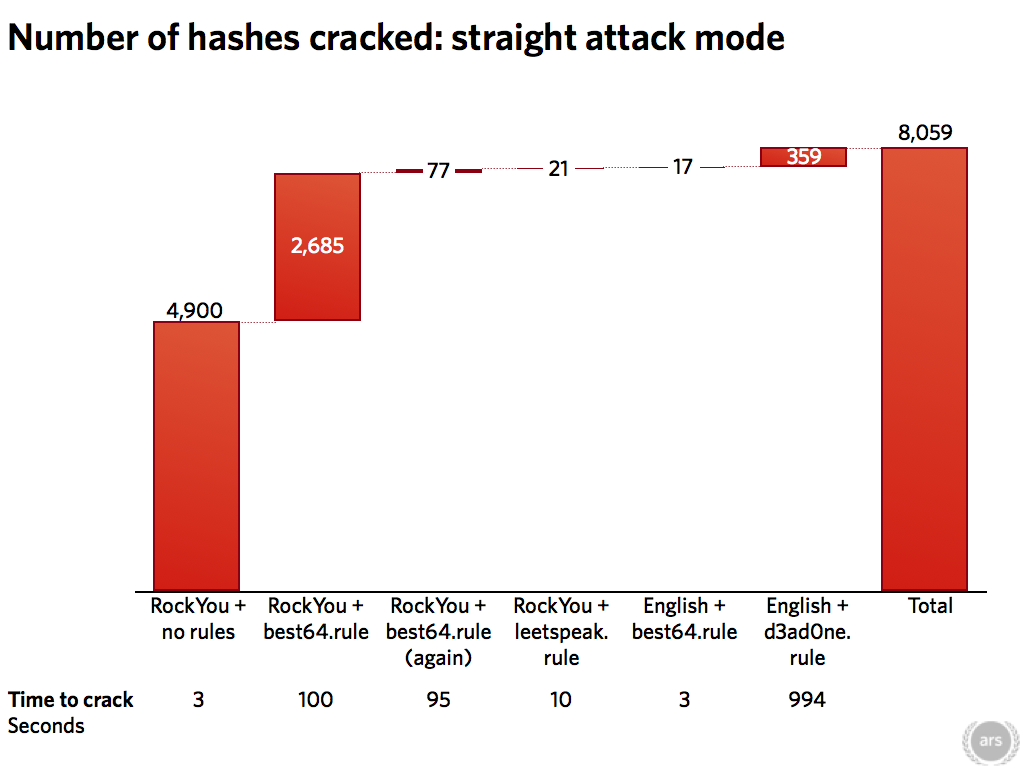
If you are only interested in strong passwords, you might remove the smaller character set sizes or It takes 0.00 hours or 0.00 days to crack your password on computer that trys 25,769,803,776 passwords per hour. Change options below to see cracking times for different cracks per second (variations in computer speed and hashing method), different size character sets, and different password lengths. Password Cracking Time Calculator.

Carrying out virtual attacks on leaked passwords like this enables us to educate individuals on the protection provided by their passwords, and can therefore help protect them from real attacks. These passwords are now freely available online. **Ethical Hacking: The real-world passwords used in this experiment were hacked and leaked online by an individual who is not myself.

Ing Time How To Carry These
Brief Background: Storing PasswordsWhen logging into a password-protected application, the sequence of events that appears to occur is the following: If you know about offline attacks against hashes please skip ‘Brief Background II: Attacking Hashes’. There’s a huge number of research papers you can read about complex password cracking algorithms, which use intricate probability and machine learning techniques, and can crack over 90% of passwords.While it’s scary how good these algorithms are, they don’t feel like a very realistic threat against the general population — how many people really know how to carry these attacks out? Why would they target me?! I decided therefore to take a look at a far more realistic attack: an attacker that knows how to create an AWS instance (or other cloud instance), and can run some open-source software on it.If you already know about hashing of passwords please skip ‘ Brief Background: Storing Passwords’.
Hash (password) is calculated locally and the hash is transmitted You can think of the hash as an irreversible jumbling of the password if an attacker discovers a password’s hash they cannot reverse the process to discover the password itself.When a user enters their password in a system like this, the actual sequence of events is the following: For increased security, many systems (though sadly not all) actually store the ‘ hash’ of users’ passwords in their database, and not the passwords themselves. Entered password is compared to the password on recordHowever transmitting and storing passwords like this is incredibly insecure.
It’s safe to say you don’t have to be a specialist to use it. Hashcat is open-source, has sources and binaries downloadable from their website, and has an extensive wiki guide to the tool. The Attack SoftwareThe software I used is called Hashcat, which is an advanced password recovery tool, and is known as the “world’s fastest password cracker”. Repeat steps 1–3 until a match is foundThis sounds pretty time consuming, however with a machine that can guess thousands of passwords in parallel, you can imagine things start to speed up. Attacks against such systems cannot reverse a hash to find the corresponding password, and therefore go as follows:
There were over 14 million passwords leaked in the attack, all of which was created by real-world users. The passwordsAs stated at the top, the passwords I ran my attack on were leaked by an attacker online. The K80 can calculate ~800 million SHA-256 hashes per second… that’s nearly 3 trillion per hour. I started off by looking at the hashing capabilities of the K80, just to see how it fairs in comparison to a standard built-in laptop GPU.The K80 came out 16 times faster than an average Intel graphics card.
Multiple words stuck together — isthissecureAnd what a coincidence… if you can provide a list of words in a file, Hashcat has different modes built in, that can guess: A word with ‘ leet speak’ applied — p4ssw0rd or f4c3b00k A word followed by some numbers/symbols — monkey! or Coffee12 Just a word (potentially with different capitalizations) — Password It’s well known that most people base their password on a word, in various forms: The logic of my attackWhile Hashcat allows you to perform simple brute-force attacks (where you try every possible password of a specified length), they also have commands for slightly more complex attacks.



 0 kommentar(er)
0 kommentar(er)
